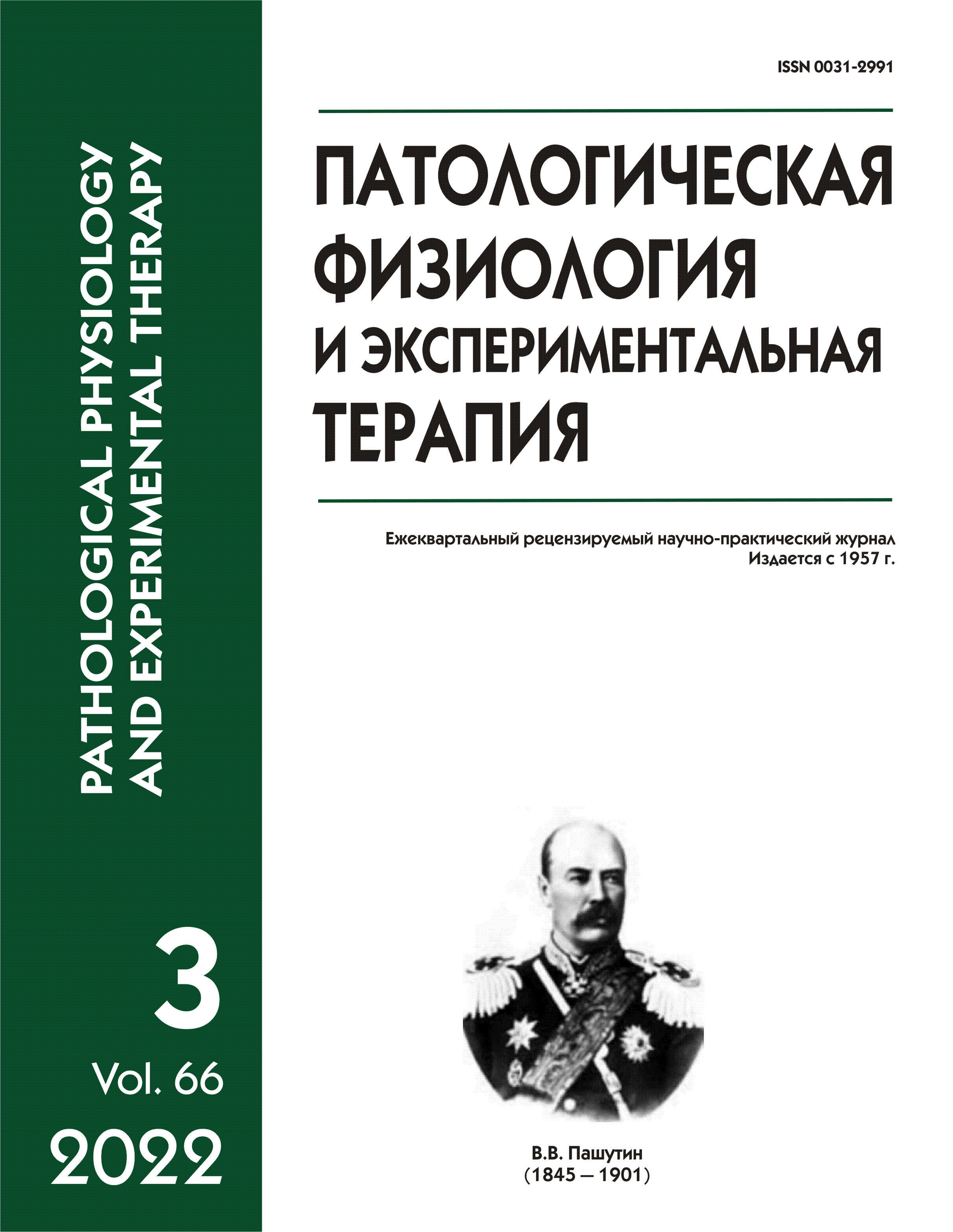Matrix metalloproteinase-2 activity and oxidative stress in the kidneys during experimental urate nephrolithiasis
Abstract
Background. Urate nephrolithiasis is a common form of urolithiasis. Matrix metalloproteinase-2, which is activated during oxidative stress and is involved in the development of pathological processes in the kidneys, may be an important component of the pathogenesis of this disease, and it might be a promising target for pharmacological correction. Aim: To study the activity of matrix metalloproteinase-2 and the intensity of free radical oxidation processes in rat kidneys during experimental urate nephrolithiasis. Methods. Experiments were performed on 17 Wistar male rats divided into control (n=8) and experimental (n=9) groups. Animals of the experimental group were injected with a mixture of 1000 mg/kg of uric acid and 500 mg/kg of oxonic acid daily for 21 days. The concentration and excretion of urinary matrix metalloproteinase-2 were determined before and on day 21 of the experiment. The concentrations of matrix metalloproteinase-2 and thiobarbiturate-reactive products, total prooxidant and antioxidant activity, and the activities of catalase and glutathione peroxidase were determined in the kidney homogenate. To monitor the formation of the disease, a morphological study was performed. Results. In the experimental group, the urinary concentration and excretion of matrix metalloproteinase-2 increased significantly by 53.9 and 112.1 times, respectively, compared with the initial level, and also by 87.6 and 163.8 times, respectively, compared with the control group, in which these indicators were stable. The concentration of matrix metalloproteinase-2 in the kidney homogenate of the experimental group was significantly 1.1 times higher than in the control group. The concentration of thiobarbiturate-reactive products, total antioxidant activity, and glutathione peroxidase activity in the kidneys of experimental rats were 4.6, 1.2, and 1.1 times, respectively, higher than in the control group, along with a 56.5% decrease in catalase activity. In the kidneys of experimental rats, 2.5±0.3 calcium deposits were found with an average area of 951.6±253.8 µm2. There were no deposits in the control group. Conclusion. In this model of urate nephrolithiasis, the concentration of matrix metalloproteinase-2 in urine and in kidney homogenate increased manyfold. Similarly, the rate of matrix metalloproteinase-2 excretion in the urine increased along with the development of renal oxidative stress and the formation of large calcium deposits.






